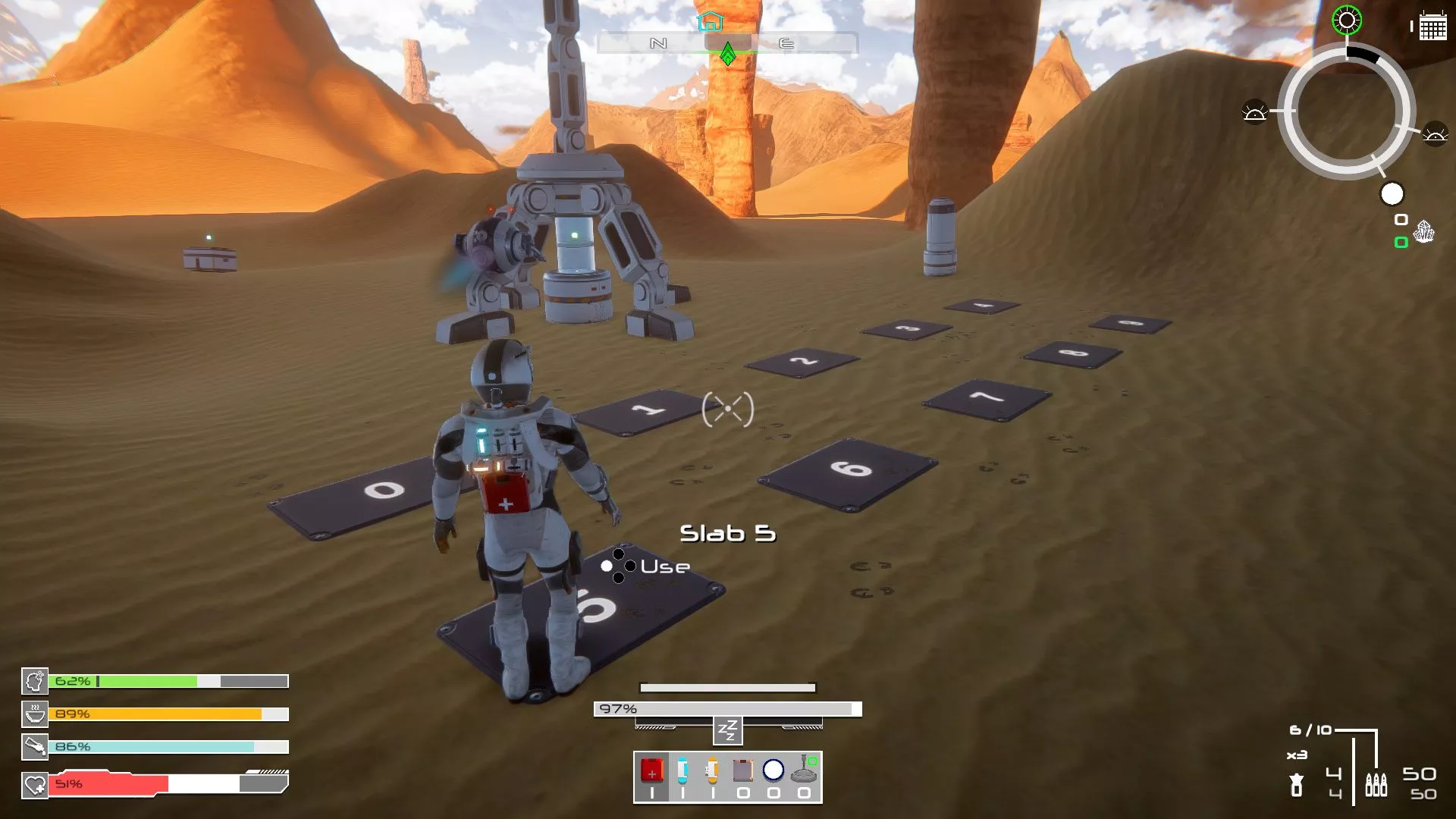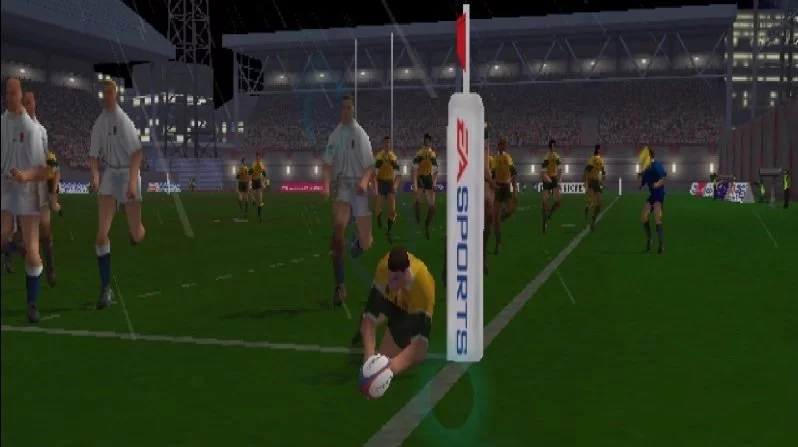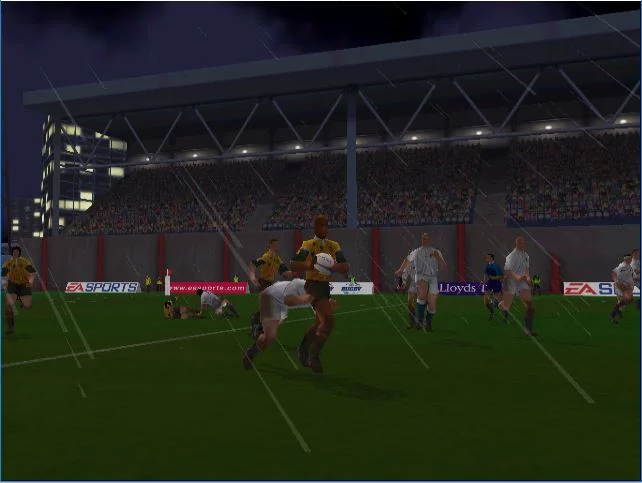One Game at a Time is a long-standing mantra for sportsmen everywhere. It is sage advice on how to handle the stress of a long football season and an indicator of the maximum mental workload most footballers can handle. To me it is a good way to approach the history of rugby union and rugby league video games, making sure each title, no matter how terrible, is not overlooked.
Part I: Unlikely Beginnings | Part II: The Pre-Season | Part III: Goose-Step | Part IV: Days of Denton | Part V: Seriously, SNES? | Part VI: Give Yourself a Triple | Part VII: Lomu! | Part VIII: His Bad Knee
Part VIII: His Bad Knee
EA Sports sat out the 32-bit era of rugby gaming, with its primary “Australian” sports studio Creative Assembly instead focused on cricket and AFL releases of varying quality. Rumour had it that EA Sports would have a rugby union game ready for the 1999 Rugby World Cup, but the big event came and went without a peep and Rugby 2001 did not arrive until nearly a year after John Eales lifted the Webb Ellis Cup for the Wallabies.
Rugby 2001, released September 2000, and its Playstation 2 sibling titled simply Rugby, released in July 2001, were the last hurrah of Creative Assembly in the sports genre. Shogun: Total War was released to critical acclaim in July 2000 and soon after the studio focused solely on its epic strategy series. History shows that was probably the correct call.
HB Studios would take over the rugby union and cricket franchises for EA Sports over the following decade, and we will get to its contribution to rugby gaming soon. EA would relinquish the rugby league and AFL licenses entirely, with local studios and publishers in Australia and New Zealand taking up those rights, retaining them to this day.
Rugby 2001 was a rare spark in what was otherwise a barren decade for rugby releases, arriving three years after Jonah Lomu Rugby and three years before Sidhe’s first Rugby League and HB’s Rugby 2004. It is the first fully 3D rugby game (Jonah Lomu Rugby used 3D stadiums but 2D sprites) and like all of Creative Assembly’s previous efforts it was a strong rugby simulation, though much like many early 3D games it doesn’t hold up well in modern times.
Rugby 2001 (EA Sports Rugby)
- 2000 (2001) – The Creative Assembly, EA Sports
- PC (PS2)
Rugby 2001 starts with a lengthy install process where commentators Bill McLaren and Jamie Salmon discuss the evolution of the sport of rugby, from one particular match with 111 lineouts to a lamentation on how there is no contest in set pieces anymore. They praise how fit players are these days and how positive an influence Australian (and Southern Hemisphere) rugby has been on the openness of the game. Rugby 2001 is a game from another era in more than just hardware terms; rugby union had only been a professional sport for five years at that time and Australia were in the middle of a five year stretch of holding the Bledisloe Cup, a trophy we haven’t laid a finger on in fifteen years.
Hardware made a massive leap between the release of Jonah Lomu Rugby and Rugby 2001. 3D graphics became standard thanks to accelerator cards and Windows overtook DOS as the platform of choice for games, ushering in the era of plug and play hardware. An underappreciated side effect of plug and play was the explosion of PC game controllers, from the Gravis Gamepad to the Microsoft Sidewinder, console style controls arrived on PC in a big way and sports games were the first to embrace them.
Rugby 2001 required finger breaking dexterity to manage kicking using a keyboard, preferring to keep sprint, passing and tackling controls under finger and making you stretch to put boot to ball. This was a game built with controllers in mind. There are three separate buttons for kicking, two for passing and one to sprint, with another required to dive on a loose ball or for in-goal touch downs. This was a time before analogue sticks on PC controllers but Creative Assembly used the momentum of players to simulate full analogue control, there was no changing directions on a dime like Jonah Lomu (or indeed most rugby games before this) and players had (perhaps too) realistic turning circles and momentum that make you feel like you are controlling a truck. It created a unique running game, even without a specific sidestep control you could with the right players lead a defender one way then change direction inside to beat them with a move that to this day feels awesome. Less awesome is the sluggish acceleration that sees you drilled every time you receive the ball from a standing start. Once you get moving it feels good, but starting that engine is a nightmare.
You needed that high gear to beat the defenders, who had superhuman homing abilities that ensured a tackle would always be successful as soon as an animation was triggered. This is especially jarring in one on one situations or when you are chasing a player and dive from well out for an ankle tap that the runner can’t avoid, even if they change direction the tackler will adjust their trajectory mid air. You can pass before the defender hits you but Rugby 2001 features no offloads. Defenders stick like a toddler with their favourite toy, once in their grasp you will never be released.
Defending in general was a touch unresponsive but there were plenty of snappy tackle animations that allowed you to quickly nab the ball at the breakdown, as well as slow, driving tackles that allow defenders to mill about waiting for a ruck. This was also the first “tackle them for a try” game, where certain tackle animations dragged the defender forward and if triggered close to the line result in the tackler assisting the try. It is a problem rugby games still struggle with to this day, so I can’t really hold it against Creative Assembly but defending close to the line was very difficult thanks to that bug, the lacklustre numbering up in defence, particularly by wingers, and a habit of AI defenders to stand behind the try line.
Rucks and scrums were treated the same way, both in controls and animations. Animating a ruck in 3D must have proven too tough a challenge so a scrum simply forms over the ball after every tackle. You can add up to seven players to the ruck and a meter that resembles rolling hills indicates the energy of your pack. You hold back on the d-pad to dig in and conserve strength, forward to push. How many players you add to the ruck becomes a strategy, quick turnovers can be generated by putting three players in there, requiring only a small push to win the ball, while you can slow the breakdown significantly by piling in the full seven, requiring your AI opponent to match you and giving the backs some room. It was a blister inducing system (you just can’t help but push the d-pad harder in an effort to push the ruck) but it mostly worked well, if looking a little ridiculous. Mauls were handled the same way but with their own animations.
The kicking game was a real mixed bag. Goalkicking was excellent, requiring you to judge the wind, kick strength, level of curve and trajectory, with no need for timing metres. To this day it is still my favourite goalkicking system in all rugby games. In play kicking is somewhat less effective, you need an eternity to get away a decent clearing kick and the bomb is far too effective a weapon as priority for catches is given to players on the run, often the defender won’t even jump for a ball resulting in attacking players leaping, catching and breaking straight through the line. Without the ability to hold an attacker up in goal the bomb becomes a deadly weapon, particularly in multiplayer games. That might be fine in rugby league, but I can’t remember the last time I saw a try scored from a high kick in rugby union. Another rugby game standard of players being unable to field a ball next to the sideline without running over it is featured here too.
That was hardly the only bug in Rugby 2001, though thankfully none were outright game breaking. Some were just curious design choices, the warping tacklers were matched by a ball that changes direction mid air to ensure it finds the receiver, having few passes go to ground was nice but watching players throw over the shoulder passes or swinging the ball wildly across the line doesn’t make for the most realistic experience. On screen indicators for penalties and knock-ons often referenced the wrong team, but the ball usually went to the correct side. There were several situations you can always score from, particularly if penalties were given close to the line, and advantage was completely missing.
This was not a game designed for grinding ruck play. You have an unusual amount of room to move around the breakdown and can scoop and go from the ruck far more often than even modern rugby union games. Outside runners can run some questionable angles back on the inside, resulting in a lot of backline movements that end with over the shoulder flick passes or floating inside balls that see a runner come from miles away to burst onto the pass. Hit-ups and keeping your pack behind you are unimportant, though it is easy to turn the ball over when isolated since it is so easy for any player to scoop up the ball.
I had some epic matches in Rugby 2001 but looking back now the AI is simple and easily exploited. It is easy to steal the ball at the ruck by keeping numbers low and just as easy to protect your own possession. If you can just get the ball near the line a try is guaranteed as AI defenders run away from and around the ball or your own AI runners take a line they have no hope of stopping. Since most rucks end up drawing seven forwards per side into the contest you will eventually be able to simply run around the AI defense, though spreading the ball across the line is usually enough to confuse them into leaving a gap to run through.
The PS2 version of the game had a slightly different interface and fewer bugs, but graphically it was muddier and it lacked the official World Cup license of the PC version. Coming out two years after the previous World Cup it didn’t matter very much, and the “World Championship” was suspiciously similar to the real thing in format. Both games featured real rosters and player likeness to a reasonable degree for the time, and both modelled plenty of real stadiums including Stadium Australia, Ellis Park and the MCG along with all European venues of the 1999 World Cup; the stadium selection screen even includes some history lessons on the European venues from McLaren and Salmon. The level of stadium detail is pretty good for its time. Weather effects were also included and I remember being wowed by the pounding rain and slowly muddied player jerseys, even if it looks rather primitive today.
Special mention must again go to the commentators, Bill McLaren was brilliant in his commentary stints both here and in Jonah Lomu Rugby, while Jamie Salmon plays off him well. It is a reasonably natural call that captures exciting moments and times the commentators enthusiasm well. You could easily say that Creative Assembly’s biggest strength in sports games was the play-by-play commentary, though they’d stopped calling it the “Live” system by this point.
Rugby 2001 doesn’t hold up as well as I thought it would, everything feels a touch sluggish and the poor defensive AI and positioning is very noticeable. That isn’t to say it wasn’t good for its time, the sheer number of hours myself and others put into it testify to that, but unlike Jonah Lomu Rugby and ARL 96 it isn’t going to be held up as one of the rugby gaming classics.
As mentioned, this was the last sports title released by Creative Assembly. Today it is renowned worldwide for the Total War series of strategy games. EA Sports continued its involvement in rugby union games for another decade, publishing HB Studios Rugby titles for the remainder of the PS2 generation. We’ll be looking at those soon.
THE CRITICS
We are reaching the age where online aggregators started to pick up reviews, though rugby games were low on the priority list for online and print publications at this point. Where reviews of older rugby games were generous to the point of ridiculous, likely rushed through tight publishing deadlines, now critics were staying away from niche sports games entirely. Mobygames provides some European reviews of Rugby 2001, but finding reviews in English is surprisingly difficult and from memory the major Australian gaming magazines Hyper and PC Powerplay did not review the PC version.
Rugby for PlayStation 2 got a little more critical attention, scoring firmly around the 80 mark. This is largely because Rugby got an American release on console, leading to a lot of reviews that spend most of their text explaining the rules of rugby and the differences between their version of football and this one. The graphics were criticised for not meeting PlayStation 2 standards and the lacking modes compared to other EA Sports games of the time was noted, especially the lacking customisation features. All of the modern aggregators have plenty of Rugby reviews, you can find them below.
NEXT TIME:
A rugby league game breaks records and hearts.
This article may contain affiliate links, meaning we could earn a small commission if you click-through and make a purchase. Stevivor is an independent outlet and our journalism is in no way influenced by any advertiser or commercial initiative.



























